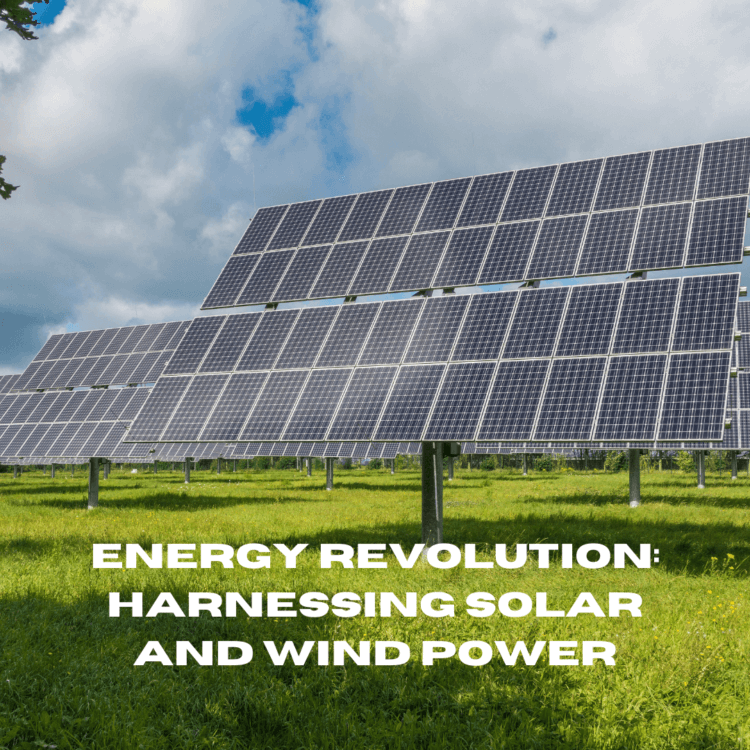The transition towards harnessing solar and wind power as part of a broader energy revolution is a crucial and ongoing global effort. This shift is driven by the need to reduce greenhouse gas emissions, combat climate change, and create a more sustainable and renewable energy future. Here are some key points regarding the harnessing of solar and wind power:
1. Renewable Energy Sources:
Solar and wind power are both renewable energy sources. They rely on the sun’s energy and wind currents, which are virtually inexhaustible and produce no direct emissions or pollutants.
2. Reducing Greenhouse Gas Emissions:
Transitioning to solar and wind power helps reduce the reliance on fossil fuels, which are major contributors to greenhouse gas emissions. This reduction is critical in mitigating climate change.
3. Solar Power:
Solar power is harnessed through photovoltaic (PV) panels, which convert sunlight into electricity. Solar panels can be installed on rooftops, in solar farms, and even integrated into various products. Advances in solar technology have improved efficiency and reduced costs over the years.
4. Wind Power:
Wind power is generated using wind turbines. These turbines capture the kinetic energy from the movement of air and convert it into electricity. Wind farms, typically located in areas with strong and consistent wind patterns, provide a substantial amount of clean energy.
5. Intermittency and Energy Storage:
Both solar and wind power are intermittent energy sources, as they depend on weather conditions. To overcome this, energy storage systems like batteries have become crucial. They store excess energy when the sun is shining or the wind is blowing and release it when needed.
6. Grid Integration:
Integrating solar and wind power into the existing electrical grid is a challenge. Grids need to be flexible and adaptable to handle the fluctuations in energy generation from these sources.
7. Economic Benefits:
The renewable energy industry has created jobs and economic growth in many regions. As technology advances and scales up, costs continue to decrease, making solar and wind power increasingly cost-competitive with fossil fuels.
8. Environmental Impact:
Solar and wind power have a lower environmental impact compared to fossil fuels. They reduce air and water pollution, habitat destruction, and the risk of oil spills or nuclear accidents.
9. Challenges:
Challenges include the intermittency of these sources, land use conflicts, and the need for infrastructure development. Additionally, the production and disposal of solar panels and wind turbines have environmental and resource implications.
10. Innovation and Investment:
Continued research and development, government policies, and private sector investments are crucial for advancing solar and wind technologies. Innovations in materials, energy storage, and grid management can help overcome current limitations.
11. Global Adoption:
Many countries are setting ambitious renewable energy targets and working towards transitioning to solar and wind power. The adoption of clean energy solutions varies from one region to another, depending on available resources and political will.
In conclusion, the harnessing of solar and wind power is a key component of the global energy revolution. It is essential for reducing carbon emissions, combating climate change, and creating a sustainable energy future. Advances in technology, policy support, and public awareness will continue to drive this transition towards a cleaner, more sustainable energy landscape.










No Comments
Leave Comment